Angle Stop
Supply stop valves
The simple angle stop, also known as a supply stop or fixture service valve has been used to control the flow of water to individual fixtures for over a hundred years. There are some things to know about angle-stops, and some tricks as well.
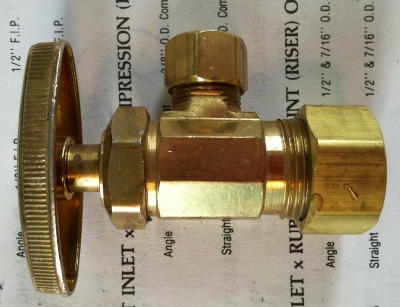
The angle-stop above is a little old school, it has a brass stem. One would think that a conscientious plumber would prefer that but a plastic stem is preferable. The reason for this is that when water seeps a little at the packing nut and then evaporates it will leave lime that was dissolved in the water. This lime adheres tenaciously to the brass stem. The next time the valve is used the lime stain chafes the packing seal as the stem passes through it, causing more seeping and more lime deposits. lime will not adhere to a plastic stem, so as that stem passes through the packing seal the lime is wiped away and does no harm.
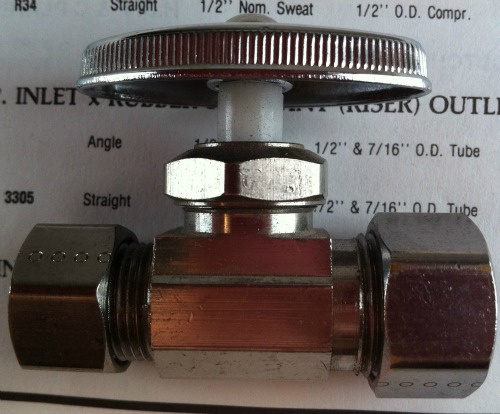
The valve above is a straight stop, no angle. It has the plastic stem that I find to be more reliable.
Note the size of the nuts to the right and left, they are compression fitting nuts and come with brass ferrules in them for binding to the outside of copper pipe. The inlet of the valve above, (right side), fits to 1/2" copper pipe. The outlet fits to 3/8ths" ID, also known as 1/2" OD.
1/2" OD is the size of a claw foot tub supply and a straight stop like this is both the supply stop for a claw foot tub and the way to transition from the 1/2" copper pipe emerging through the floor to the plated supply that rises to the faucet inlet.
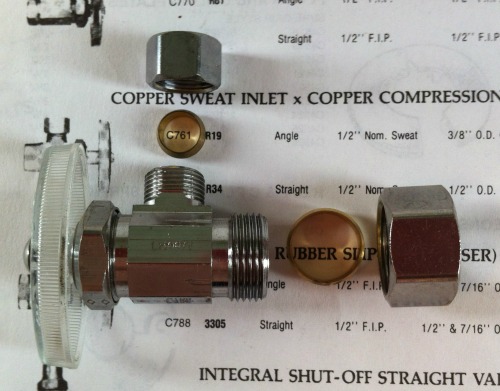
Here is a view of a stop with the nuts and ferrules loose. It is probably the most common angle-stop. 1/2" nominal by 3/8ths OD compression. I wipe the ferrules with Megaloc thread sealant and put a little on the male compression thread as well so they slide home with no binding.
See Nonferrous Work on my page Mechanics Rules regarding tightening brass joints.
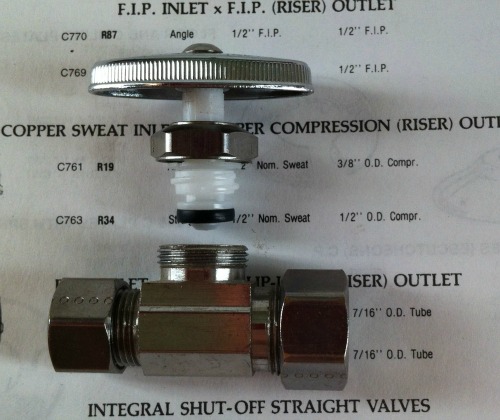
Here is the stem removed from the valve body. Note the brevity of the acme thread. The "Stop Washer" is forced onto a barb at the end of the stem.
Note! Angle stop trick.
The single best thing to know about angle-stops is how easy it is to fix the most common problem with them. Almost every valve in your home is off till you use it. The angle-stop though is on till you use it. This being the case the washer at the end of the stem is almost never pressed to the brass seat in the valve body. When it is pressed to the seat as the valve is being turned off the washer may crumble from age and disuse, may encounter a foreign object, or may simply have eroded away. You will have to turn the system off instead of just the angle stop. While you have the system off, *remove the packing nut and pull the valve stem out of the valve. You will want a container under the valve for this. Once the stem is removed peer into the valve to see if the waterway is clear. You may find dip tube from the water heater if it is a hot side valve. You may find rust, and you may find remnants of the old washer. Remove any debris you find and replace the washer at the end of the stem with a **new washer. When the stem is back in place snug the packing nut, turn the valve off, and turn the system back on. When you turn the angle stop on again check for packing leaks and tighten the packing nut further as needed to stop leaks.
Most people replace the angle stop when it fails. To do that the inlet and outlet joints must be undone and redone. I consider this to be needless egg breaking. I always aim for less invasive repairs. I always favor repair over replacement.
*Always remember when removing and replacing valve stems to turn the stem to a neutral position in the valve so it will not bind against the seat or the packing nut when the packing nut is being turned.
**These are not regular bibb washers, they are softer and have a larger hole in them to accommodate the barbed tip of the stem. Brass Craft makes the replacement washer, I buy them in twenty packs from my supplier.
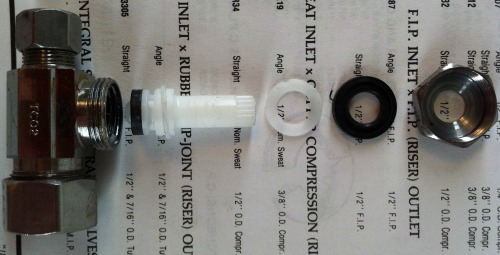
Here is an exploded view of the stop, stem, and packing seals.
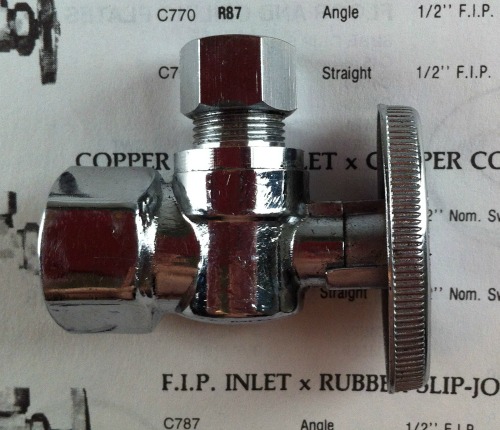
Here is the answer to the worn out stop washer, this stop has a stainless steel ball instead of a rubber washer. It is commonly known as quarter turn stop. Be aware though, When loosening the compression nut sometimes the valve body loosens instead. That is the mid body joint you see below the thread. It holds the ball in place, therefor it holds the water back when the valve is off. A slight back hold there may be prudent. These ball valves are gaining in popularity, some clients ask for them. I like them well enough but I have had more then a few try to slip apart in the wrong place, (as I mention just above), when I was replacing a faucet or supply down steam of them.
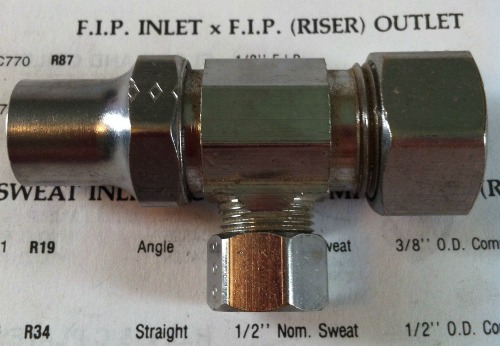
This is a vandal proof stop. It is just the same as a vandal proof hose valve and takes the same key to turn the stem.
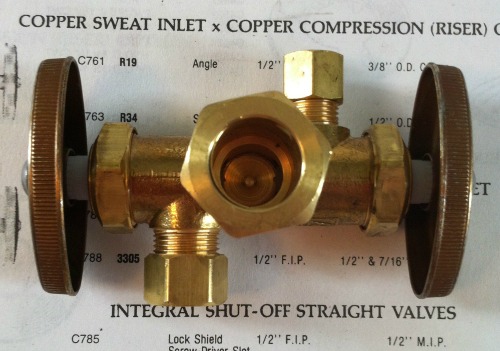
This is a two way valve. It is very handy to have when installing a second hot or cold water supply outlet for a dish washer, ice maker, or water filter. It can be had in IPS or compression inlet, like other stops. It can be had 3/8ths" on one side and 1/4" on the other like the valve pictured or 3/8ths"X3/8ths".
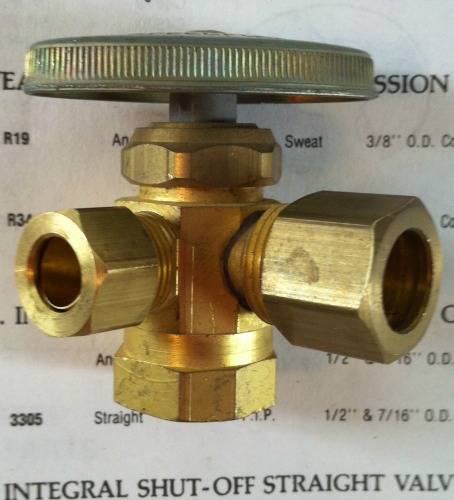
This two way valve is not legal. It forces one to turn off more than one fixture at a time down stream. So if the ice maker line bursts you may have no cold at the faucet till the ice maker is repaired. Each outlet requires its own stem and handle.